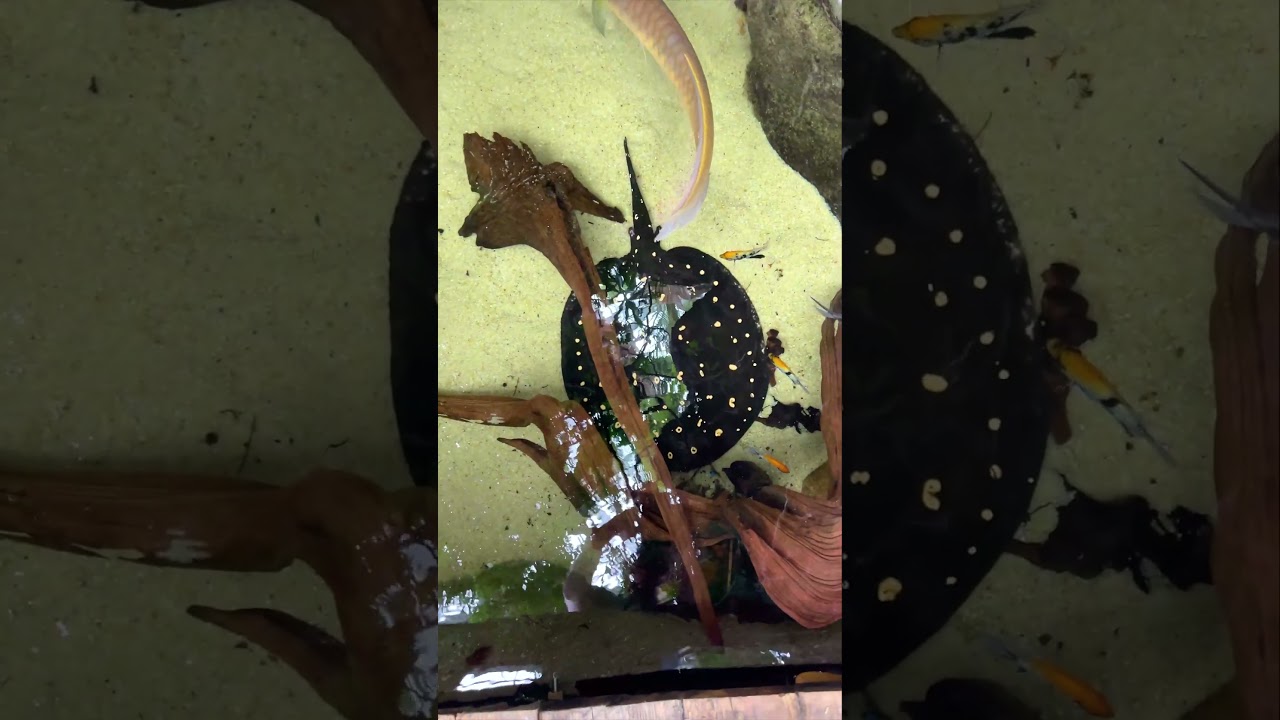- Introduction to Tiny Wows: These Rays Are Fresh(water)!
- Species diversity and unique adaptations of freshwater rays
- Conservation efforts and environmental challenges
- Role of zoological parks in education and awareness
- Future directions in freshwater ray research and conservation
Tiny Wows: These Rays Are Fresh(water)! is an exciting and educational zoo exhibit that brings attention to the fascinating world of freshwater rays. This exhibit highlights the importance of these often-overlooked species, showcasing their unique biological traits, conservation status, and the challenges they face in their natural habitats. By engaging the public, it helps raise awareness about the need for conservation efforts.
Species diversity and unique adaptations of freshwater rays
Freshwater rays, compared to their marine cousins, present an amazing array of physical and behavioral adaptations that make them well-suited to their freshwater habitats. Species such as the Xingu River ray (Potamotrygon leopoldi) and the Ocellate river stingray (Potamotrygon motoro) are prominently featured in the exhibit. Each species showcases distinct characteristics, from unique patterns and coloration to specialized feeding habits.
Freshwater rays have evolved a variety of features for survival in riverine environments. For instance, their flattened bodies enable them to navigate shallow waters efficiently. Their cartilaginous skeletons provide flexibility and durability, advantageous for swimming through intricate river systems. Additionally, they possess electrosensory systems that help them detect prey even in murky waters, highlighting a critical survival adaptation.
From a dietary perspective, freshwater rays primarily feed on invertebrates and small fish found on riverbeds. Their mouthparts are adapted to sucking up prey from the substrate, a feeding style distinct from their marine relatives. Their sensory adaptations are particularly interesting, with ampullae of Lorenzini playing a crucial role in detecting the electric fields generated by potential prey.
Conservation efforts and environmental challenges
Freshwater rays face significant threats from habitat destruction, pollution, and overfishing. Many river systems are subject to damming, deforestation, and agricultural runoff, all of which degrade water quality and disrupt habitats. Conservation efforts for these species are thus pivotal.
The exhibit underscores the importance of habitat preservation and restoration. It provides insights into ongoing conservation projects aimed at protecting river ecosystems. Researchers and conservationists are working on various fronts, such as creating protected areas, improving water management practices, and enforcing stricter regulatory controls on fishing and pollution.
Moreover, breeding programs play a vital role in conservation. Zoological institutions participate in initiatives to breed freshwater rays in captivity, ensuring population sustainability. These programs also aim to reintroduce rays into their native habitats. Successful breeding requires knowledge of their reproductive biology and environmental needs, which is continuously evolving through research.
Role of zoological parks in education and awareness
Zoological parks like the one hosting the Tiny Wows: These Rays Are Fresh(water)! exhibit serve as crucial platforms for public education and engagement. They offer visitors a chance to witness these creatures up close, sparking curiosity and awareness. Interactive displays and educational sessions provide in-depth information about the biology, ecology, and conservation of freshwater rays.
By fostering a connection between the public and wildlife, zoos play an instrumental role in conservation advocacy. Visitors leave with a greater appreciation for the ecological significance of freshwater rays and the need for their protection. This educational outreach extends beyond the zoo’s physical confines through virtual tours, social media, and collaborative events with schools and environmental organizations.
Furthermore, zoos contribute to scientific research by collaborating with academic and conservation institutions. They facilitate studies on ray behavior, genetics, and health, which are crucial for developing effective conservation strategies. Data collected from captive specimens help inform efforts to protect wild populations.
Future directions in freshwater ray research and conservation
The future of freshwater ray conservation hinges on continued research and innovative conservation strategies. Scientists are increasingly focusing on understanding the genetic diversity within and between ray populations, which is vital for effective breeding programs and reintroduction efforts. Advances in technology, such as environmental DNA (eDNA) sampling, are becoming valuable tools for monitoring wild populations and assessing ecosystem health.
Public engagement remains a cornerstone of conservation efforts. Expanding educational programs and harnessing digital platforms can broaden outreach. The integration of augmented reality (AR) and virtual reality (VR) into educational tools can provide immersive experiences, offering new ways to engage the public and promote conservation messages.
Collaboration between countries sharing river systems is also essential. Transboundary conservation initiatives can lead to more comprehensive and effective management of shared water bodies. International treaties and agreements can help harmonize efforts, ensuring that conservation measures are consistent and impactful across borders.
Freshwater rays, with their incredible diversity and ecological importance, are deserving of the focused attention demonstrated by exhibits like Tiny Wows: These Rays Are Fresh(water)! Through a combination of public education, scientific research, and proactive conservation measures, we can work towards ensuring the survival of these fascinating creatures and the health of their freshwater habitats.
*****
Source Description
When most people think of stingrays, their minds turn to the ocean, but did you realize that there are freshwater stingrays? Well, we’ve got a pair of them in our Lemur Forest exhibit, and our animal care specialists thinks they warrant taking the time to appreciate when you visit!
#stingray #ray #lookcloser #tennesseeaquarium


